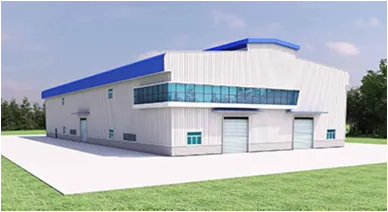- Afrikaans
- Albanian
- Amharic
- Arabic
- Armenian
- Azerbaijani
- Basque
- Belarusian
- Bengali
- Bosnian
- Bulgarian
- Catalan
- Cebuano
- Corsican
- Croatian
- Czech
- Danish
- Dutch
- English
- Esperanto
- Estonian
- Finnish
- French
- Frisian
- Galician
- Georgian
- German
- Greek
- Gujarati
- Haitian Creole
- hausa
- hawaiian
- Hebrew
- Hindi
- Miao
- Hungarian
- Icelandic
- igbo
- Indonesian
- irish
- Italian
- Japanese
- Javanese
- Kannada
- kazakh
- Khmer
- Rwandese
- Korean
- Kurdish
- Kyrgyz
- Lao
- Latin
- Latvian
- Lithuanian
- Luxembourgish
- Macedonian
- Malgashi
- Malay
- Malayalam
- Maltese
- Maori
- Marathi
- Mongolian
- Myanmar
- Nepali
- Norwegian
- Norwegian
- Occitan
- Pashto
- Persian
- Polish
- Portuguese
- Punjabi
- Romanian
- Russian
- Samoan
- Scottish Gaelic
- Serbian
- Sesotho
- Shona
- Sindhi
- Sinhala
- Slovak
- Slovenian
- Somali
- Spanish
- Sundanese
- Swahili
- Swedish
- Tagalog
- Tajik
- Tamil
- Tatar
- Telugu
- Thai
- Turkish
- Turkmen
- Ukrainian
- Urdu
- Uighur
- Uzbek
- Vietnamese
- Welsh
- Bantu
- Yiddish
- Yoruba
- Zulu
Nov . 17, 2024 13:48 Back to list
Building Steel Structures An Overview
Building steel structures have become a cornerstone of modern architecture and engineering, revolutionizing the way we design and construct buildings. Steel, as a material, offers a combination of strength, versatility, and durability that makes it an ideal choice for a vast array of construction projects. In this article, we will explore the characteristics, benefits, applications, and future of steel structures.
Characteristics of Steel Structures
Steel is an alloy primarily composed of iron and a small percentage of carbon. This composition gives steel its remarkable strength-to-weight ratio, making it much stronger than other materials such as wood or concrete. Steel structures can carry heavy loads while remaining lightweight, which is critical for high-rise buildings and large-span constructions. Additionally, the malleability of steel allows it to be molded into various shapes and sizes, enabling architects and engineers to explore innovative designs that were not possible with traditional materials.
Another notable characteristic of steel is its resistance to various environmental factors. Unlike wood, which can succumb to rot and pests, steel is not susceptible to decay or infestation. Moreover, with proper treatment and maintenance, steel structures can withstand extreme weather conditions, including hurricanes, earthquakes, and heavy snowfall.
Benefits of Steel Structures
1. Speed of Construction One of the most significant advantages of using steel in construction is the speed at which projects can be completed. Steel components are often prefabricated off-site, which allows for simultaneous site preparation and construction. This efficiency can significantly reduce the overall timeline of a building project.
2. Cost-Effectiveness While the initial cost of steel may be higher than other materials, its long-term benefits often offset the upfront investment. Steel structures require less maintenance, have lower insurance costs due to their fire and pest resistance, and their longevity translates to less frequent replacements or renovations.
3. Sustainability Steel is one of the most recycled materials globally. Approximately 90% of steel products are recycled at the end of their lifecycle, making it an environmentally friendly choice. The production of steel has also become more sustainable due to advancements in technology, leading to reduced emissions associated with its manufacturing.
building steel structure

4. Design Flexibility Steel's strength enables architects to create open spaces without the need for numerous support columns. This flexibility can lead to more functional and aesthetically pleasing designs, accommodating modern needs such as spacious interiors in commercial buildings or creative layouts in residential projects.
Applications of Steel Structures
Steel is the material of choice for a diverse range of building types. From skyscrapers and bridges to warehouses and stadiums, steel structures provide the backbone of modern infrastructure. Notable examples include the iconic Burj Khalifa in Dubai, which stands as a testament to steel's ability to support towering heights, and the Sydney Harbour Bridge, which showcases steel's strength and durability in an exposed environment.
In addition to traditional applications, steel structures are increasingly being used in temporary constructions, such as event spaces and emergency shelters. Their modular nature allows for quick assembly and disassembly, which is particularly beneficial during emergencies or for temporary events.
The Future of Steel Structures
As technology continues to advance, the future of steel in construction appears promising. Innovations such as advanced steel alloys and composite materials are being developed to enhance performance and reduce costs. Additionally, the integration of smart technology in steel structures is on the rise, allowing for improved monitoring and maintenance of buildings over time.
Moreover, as the construction industry moves toward more sustainable practices, the emphasis on steel recycling and reduced environmental impact will likely drive further advancements in steel production processes.
In conclusion, building steel structures represent a significant advancement in construction methodologies. With benefits that range from rapid construction timelines and lower maintenance costs to sustainability and design flexibility, steel will undoubtedly continue to shape the future of architecture and engineering. As we look ahead, embracing the potential of steel structures will allow us to meet the challenges of modern building demands and environmental considerations.
-
How Do Prefabricated Steel Structures Transform Modern Construction?
NewsJul.14,2025
-
How Do Prefabricated Metal Buildings Redefine Modern Construction?
NewsJul.14,2025
-
How Do Prefab Insulated Metal Buildings and Steel Structures Revolutionize Modern Construction?
NewsJul.14,2025
-
How Do Pre - Engineered Steel Structures Redefine Modern Construction?
NewsJul.14,2025
-
Advancing Modular Construction with Prefabricated Metal Structures
NewsJul.14,2025
-
Advancing Industrial Infrastructure with Prefabricated Steel Solutions
NewsJul.14,2025
Products categories
Our Latest News
We have a professional design team and an excellent production and construction team.












